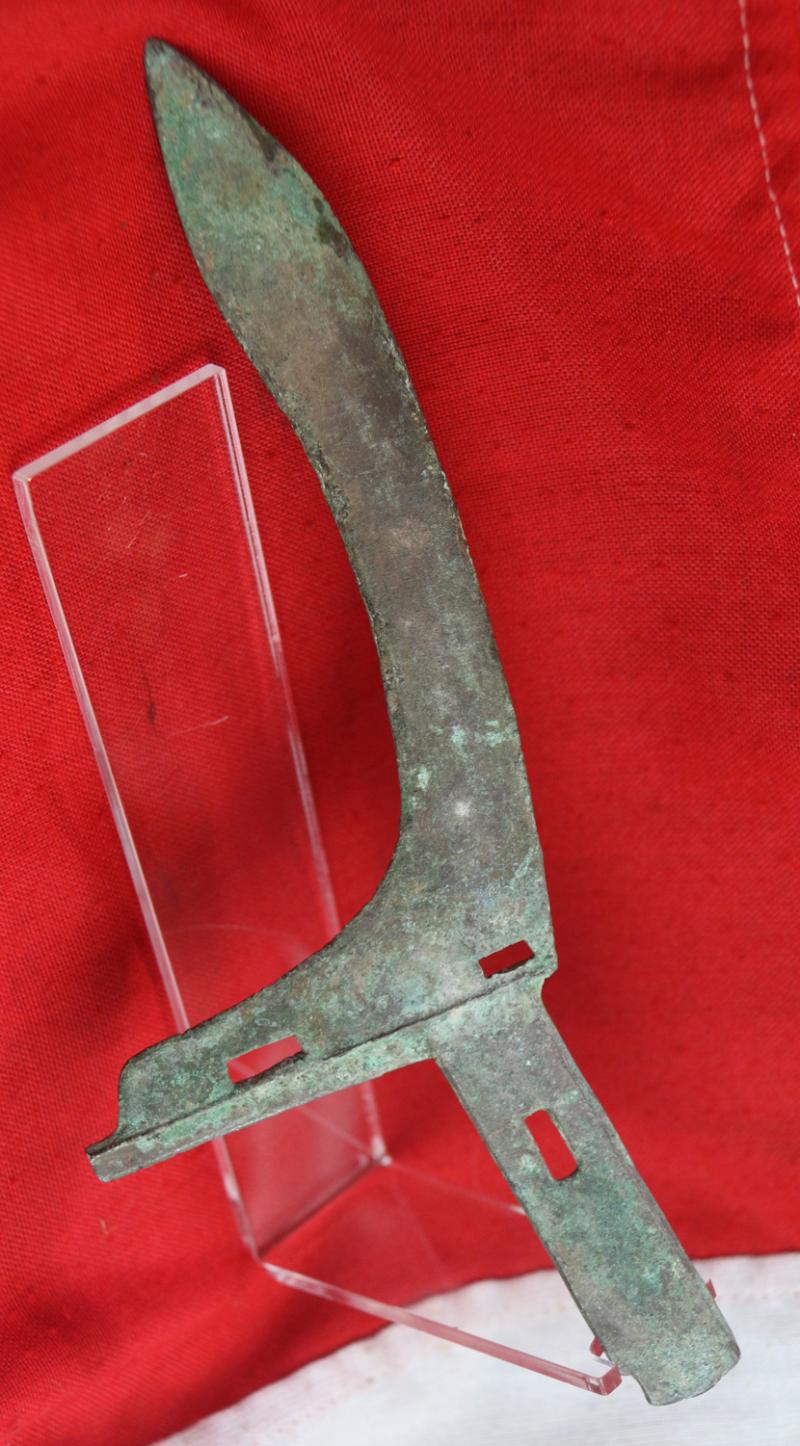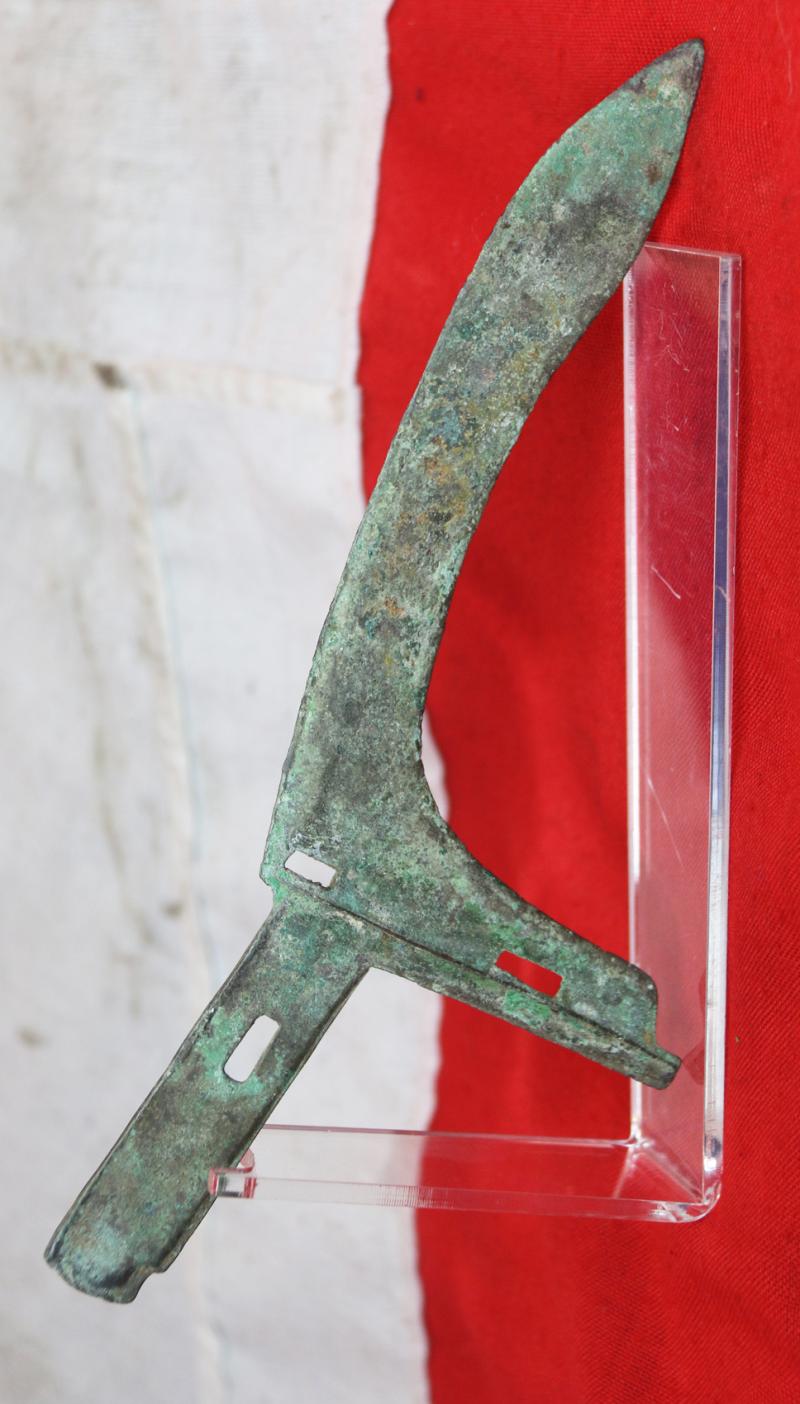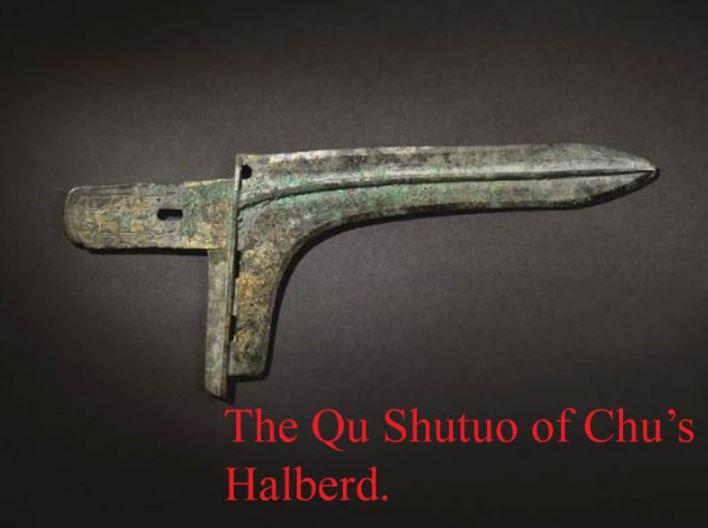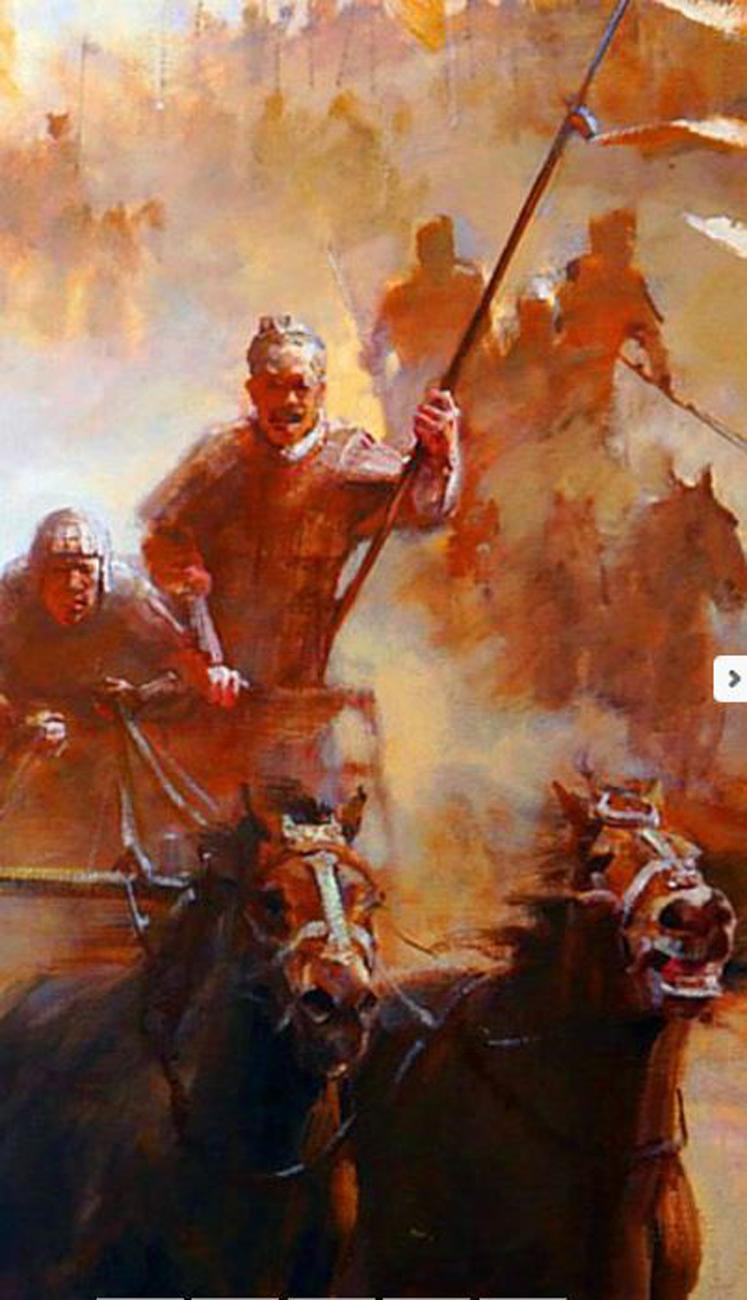Archaic Zhou Dynasty Bronze Halberd or ‘Ge’ Circa 5th Century BC the Period of the Great Military Doctrine 'The Art of War' by General Sun-Tzu
Another from our collection of stunning ancient Chinese swords and weaponry that we recently acquired, including halbeard axe called a 'Ge'.
This is the very type of original ancient ceremonial halberd, defined by the ancient Chinese as a dagger axe 'Ge' and exactly the type as used by the warriors serving under the world renowned General Sun Tzu, in the Kingdom of Wu, who is thought by many to be the finest general, philosopher and military tactician who ever lived. His 2500 year old book on the methods of warfare, tactics and psychology are still taught and highly revered in practically every officer training college throughout the world.
In excavated condition, cast in one piece, slightly curved terminal blade of flattened-diamond section, pierced along a basal flange with three slots, and a hole with fabulous areas of crystallized malachite, blue/green patina.
We also show in the gallery a painting of how this 'Ge' halbard would have been used once mounted 2500 odd years ago on its long haft, and used by a Zhou warrior, there is also one depicted being carried in a painting that we show in the gallery being used in an infantry charge in the Zhou dynasty.
This is a superb original ancient piece from one of the great eras of Chinese history, it is unsigned but near identical to another that was signed and inscribed with details that have now been fully translated, deciphered and a few years ago shown at Sothebys New York estimated to a sale value of $300,000. Its research details are fully listed below, and it is photographed within our gallery for the viewers comparison. Naturally, our un-inscribed, but still, very rare original version, from the same era and place, is a much more affordable fraction of this price
The signed and named Sotheby's of New York example that we show in the gallery, was formerly made for its original warrior owner, Qu Shutuo of Chu, it is from the same period and in similar condition as ours. We reference it's description below, and it is photographed within the gallery, it is finely cast with the elongated yuan divided by a raised ridge in the middle of each side and extending downward to form the hu, inscribed to one side with eight characters reading Chu Qu Shutuo, Qu X zhisun, all bordered by sharply finished edges, the end pierced with three vertically arranged chuan (apertures), the nei with a further rectangular chuan and decorated with hook motifs, inscribed to one side with seven characters reading Chuwang zhi yuanyou, wang zhong, and the other side with five characters reading yu fou zhi X sheng, the surface patinated to a dark silver tone with light malachite encrustation
An Exhibition of Ancient Chinese Ritual Bronzes. Loaned by C.T. Loo & Co., The Detroit Institute of Arts, Detroit, 1940, pl. XXXIII.
New Orleans Museum of Art, New Orleans, March - June 1948.
This inscribed bronze halberd blade, although typical in form, is uniquely important as its inscription serves as a critical primary source that reveals the name of its original owner: Qu Shutuo of Chu. The only known close counterpart to this blade is a damaged bronze halberd blade, missing the yuan, and inscribed on the hu with seven characters, which can be generally translated to ‘for the auspicious use of Qu Shutuo of Chu’. That halberd is now in the collection of the Hunan Provincial Museum, Hunan, and published in Wu Zhenfeng, Shangzhou qingtongqi mingwen ji tuxiang jicheng Compendium of inscriptions and images of bronzes from Shang and Zhou dynasties, vol. 32, Shanghai, 2012, no. 17048
The remaining thirteen inscriptions can be translated as: 'Qu Shutuo of Chu, Qu X's grandson, yuanyou of the King of Chu'. Based on the inscription, the owner of this blade can be identified as such.
See for reference; The Junkunc Collection: Arts of Ancient China / Sotheby's New York
Lot 111
We also show in the gallery a photo of another similar halberd from a museum exhibition, of a Chinese ancient king bodyguard’s halberd gilt pole mounts for his personal charioteer
This is one of a stunning collection of original archaic bronze age weaponry we have just acquired. Many are near identical to other similar examples held in the Metropolitan in New York, the British royal collection, and such as the Hunan Provincial Museum, Hunan, China. As with all our items, every piece is accompanied by a certificate of authenticity. Approx 9.75 inches across.
Code: 24390
1995.00 GBP










